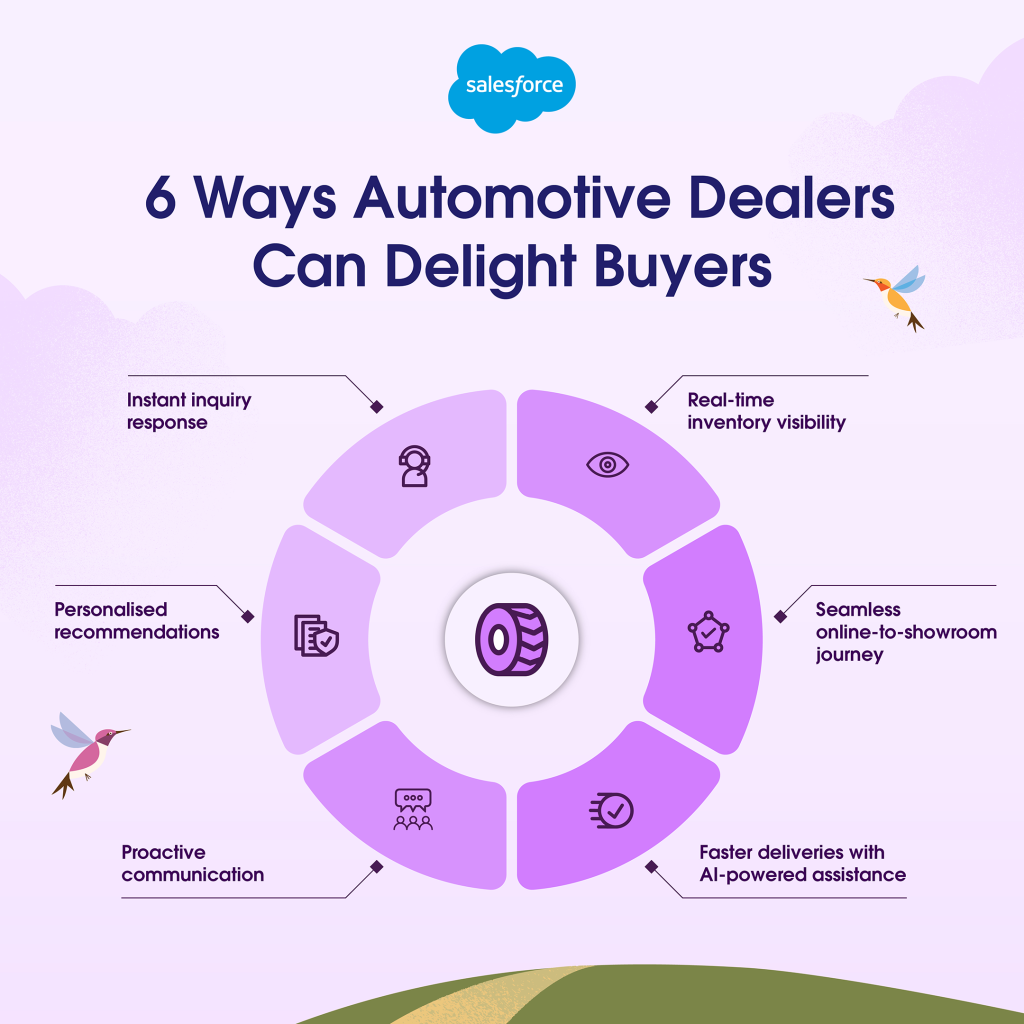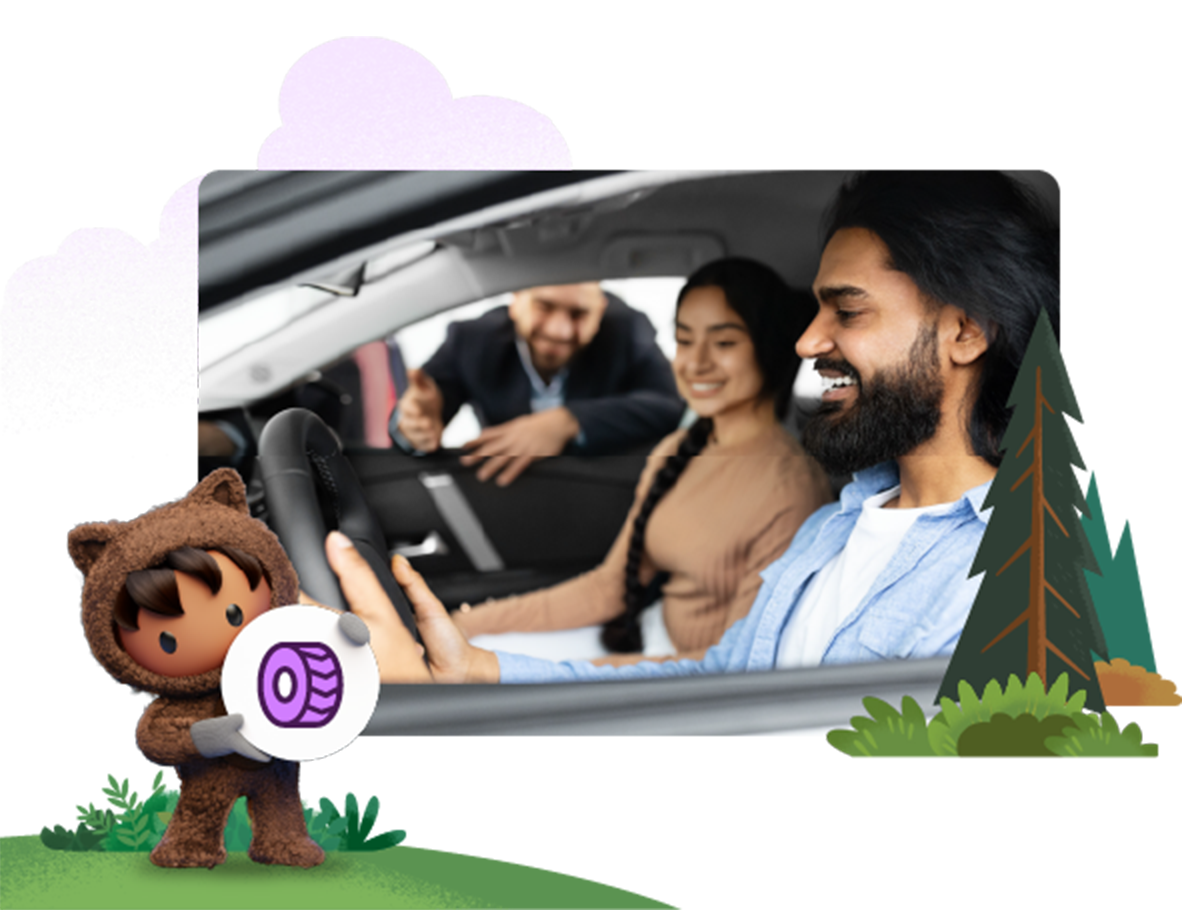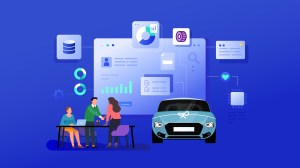Buying a new vehicle is a big moment in India. People plan their finances for months, compare variants and features, and set delivery dates to match auspicious days. The excitement builds — right up until the tedious paperwork starts. Forms stack up, document checks take time, and delivery dates stretch into months because of production delays and waitlists.
Surprisingly, this is not a problem all dealerships face. Customer satisfaction scores at dealerships for new vehicle buyers recently hit 81%, the highest ever recorded. So, what are these best-performing dealerships doing differently to deliver a smoother purchase experience to customers, and how can you get there too?

1. Connect customer data from every touchpoint
Every dealership handles hundreds of buyer interactions a day. Each one creates more data than teams can keep up with. Think estimates, variant selections, booking confirmations, payment statuses, and delivery timelines.
The solution? Bringing it all together into a single source of truth.
Salesforce Automotive Cloud creates a unified profile for each customer, accessible from both desktop and mobile. From sales reps and stock managers to service advisors and delivery coordinators, everyone sees all the relevant details without switching screens.
- Duplicate records are flagged automatically.
- Document validation happens in real time.
- Data quality checks quietly run in the background.
The result: advisors spend less time hunting for information and more time helping customers decide. Handoffs stay seamless as context travels with every customer interaction.
2. Sync online journeys with in-store conversations
For today’s digital-first customers, buying a personal or commercial vehicle has become an omnichannel experience. With Original Equipment Manufacturer (OEM) websites letting customers compare models and booking test drives, dealerships must adapt to buying journeys that start long before customers reach out to them.
One way to do this is by ensuring that context is also woven into the customer profile right from step one. Whether they are configuring a vehicle online or exploring financing options, that info should be added to the 360-degree view of the customer.
At Mahindra & Mahindra, for example, you can see this playing out in real time. Sales teams pick up a prospect’s digital enquiry, and immediately see the configured variant, their preferred payment plan, and whether a test drive has been scheduled. They can then book appointments, update quotes, and mark outcomes all from the same screen. It’s one unified conversation that flows seamlessly across all channels.
3. Get real-time visibility into inventory across branches
Inventory is one place where dealerships don’t have a lot of control. OEMs decide allocations based on regional demand, and even a small disruption in the supply chain can throw off a dealer’s numbers. What they can manage is branch-level visibility. By knowing exactly which stock sits where, dealerships can move it quickly between locations as needed.
A traditional dealership management system (DMS) will not solve this. What is needed are intuitive workflows and real-time dashboards that help branch managers check live availability across outlets, raise transfer requests directly from a vehicle record, and see delivery updates on the go. Additionally, easy-to-use interfaces that simplify daily dealership tasks, such as sending updates about pricing changes and new promotions, or flagging stockouts early on are other must-have features.
4. Accelerate every deal with AI agents
With the rising popularity of agentic AI, more than 80% of Indian businesses are already exploring the development of autonomous agents. AI agents, such as those powered by Agentforce, help dealerships eliminate the repetitive steps that slow deals down.
Here’s what that looks like on the floor: An advisor generates a quote. If the discount is within policy, the AI agent pushes it forward for approval. On booking, it triggers invoice creation and sends a payment link to the customer. The AI agent also updates status fields, like KYC received, finance cleared, and pre-delivery inspection automatically.
Finally, it can also send notifications to respective department leads when any action is needed on their end, and escalate exceptions with full context.
5. Reach out before customers do
The best dealerships stay one step ahead — anticipating customer needs and reaching out with timely, relevant messages. For example, when a warranty is about to expire, when a financing term is nearing its end, or when usage patterns hint a growing family might soon need a larger vehicle, etc.
This is proactive retention, built on intelligence rather than guesswork. It’s crucial, because 43% of customers stop buying from a brand after a poor service experience — that’s revenue walking out the door.
Within Salesforce Automotive Cloud, AI models score how likely a customer is to renew and when they might be at risk of churning. A reasoning layer then creates tasks with clear guidance on when to reach out and what to offer to ensure retention.
6. Run ops on live intelligence
Earlier, dealerships would wait until month-end to get their data before making any decisions.
Leading dealerships don’t wait anymore — they run on real-time intelligence. Everyone sees what matters to their role, right when they need it.
Advisors see their priorities for the day, such as which leads are aging, who didn’t show up, and what follow-ups are pending. Managers get an overview of campaigns that are dropping off, models moving fast or slow, and where stock-outs might happen. Network heads see how branches stack up against each other, how advisors are performing, and where leads are sitting too long.
Salesforce Automotive Cloud with CRM Analytics makes this possible through role-based dashboards and record-level alerts about stock-out risk, SLA breaches, and no-show surges. This lets dealerships adjust allocation, swap inventory, and coach sales reps in real time, ensuring problems are caught early on and high-performing practices spread faster.
You’re one step closer to building a highly connected dealership network
No dealership turns into a connected network overnight, and that’s fine. The best ones start by fixing what’s in front of them, automating the repetitive stuff, and adding intelligence where it makes the biggest difference.
That’s where Salesforce Automotive Cloud comes in. Built on Salesforce’s CRM foundation, it is purpose built for the automotive industry to connect every part of the OEM and dealer network. By unifying data, AI, and workflows into a single source of truth, it helps teams sell smarter, service better, and deliver experiences that build loyalty.
The Automotive Game Changer’s Guide to Dealership Success
Learn how OEMs can fuel customer delight through connected dealer experiences










